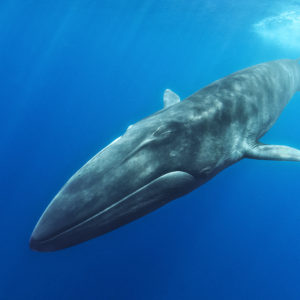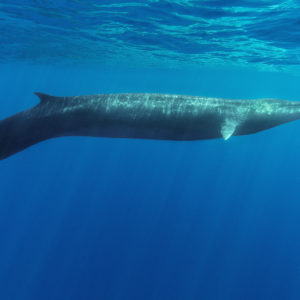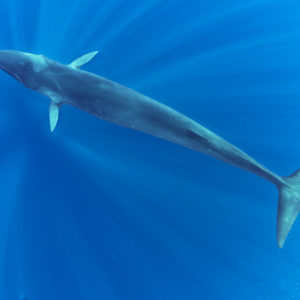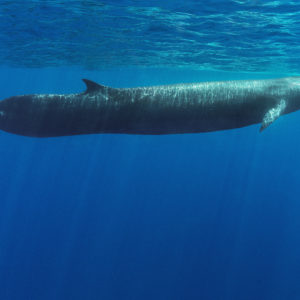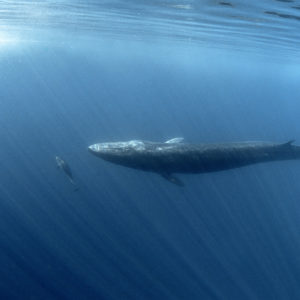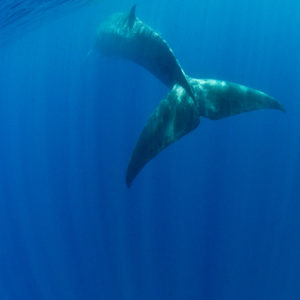Endangered Fin Whales are the second largest animal on Earth but have been very rarely photographed underwater. These images are from the azure blue Pelagos Sanctuary for Mediterranean Marine Mammals, which spans offshore waters belonging to Italy, France and Monaco. Sizeable numbers of fin whales feed there every summer. Fins are surpassed only by blue whales in size, reaching up to 24m in length and weighing up to 70 tonnes. It is able to reach 37kph and has been nicknamed the ‘greyhound of the seas’. This has been another reason it has been so hard to photograph this enigmatic whale before. Along with that of the blue whale, a male fin whale’s vocalising is the lowest-frequency sound emitted by any animal. When observers from the US Navy first detected it, they thought that they were hearing Russian submarines. The sound can travel vast distances in water; a fin whale on one side of the Atlantic can be heard by a whale on the other side.
Another unique attribute they have are their asymmetrical markings, a clear diagnostic for the species. The left-hand side of the jaw is dark; the right, pearly white. Some scientists believe that the whales use the white side to startle and concentrate their prey.
The longevity of these whales is a fascinating aspect of their natural history. Until recently we believed that they lived to about 70 years old. But in 2010 the results from the necropsy of a fin whale stranded on the coast of Denmark were released. Using amino acids in the whale’s eyes, they discovered that the animal, which observers had believed to be a juvenile, was 135–140 years old.

